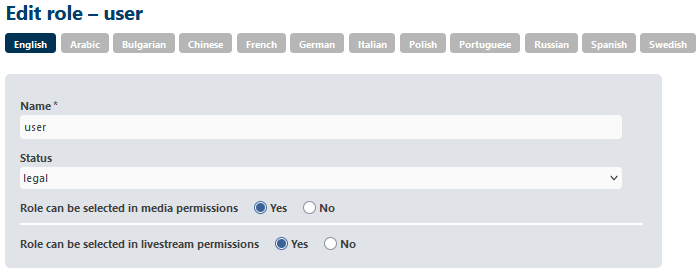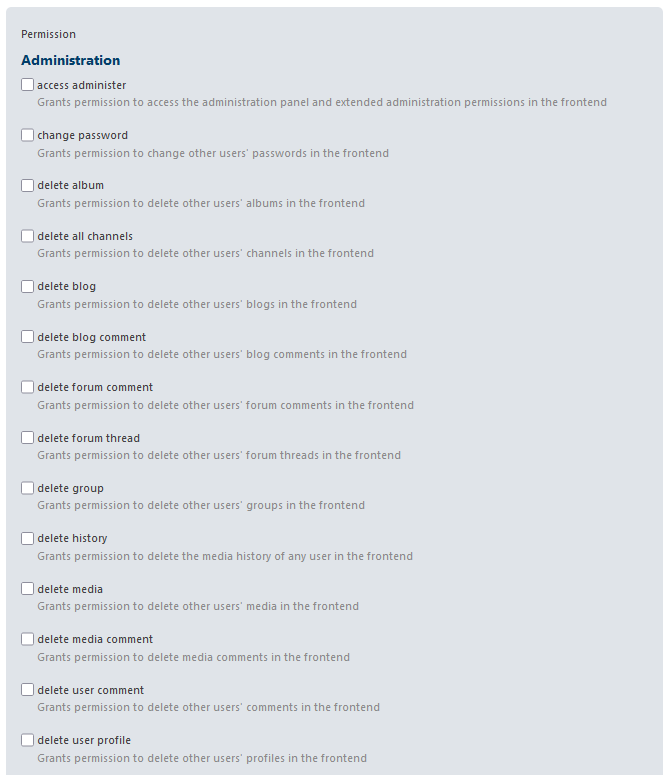Roles and Rights Management (Not available in VIMP Light)
VIMP works with a user role model. Each user must belong to one user role at least in order to get active within the platform. By default, all new registered users belong to the role “User”.
Beneath the “User” role there are “Administrator” and “Moderator” roles defined by default.
„Users“ are allowed to log in to the frontend and add new content or modify own content by default.
„Moderators“ have extended rights, allowing them to modify contents of other users within the frontend.
„Administrators“ have complete permissions, allowing them to modify contents of other users within the fronted as well as within the backend. Furthermore, they can configure the whole platform via the backend.
A special role is called „Anonymous”. This is the role, not logged in users get automatically by entering the website (“guests”).
In order to function properly, none of the four above mentioned roles must be removed from the system.
Also note that VIMP roles are not hierarchical. Permissions will not be inherited from other roles. Each roll has to be defined independently for itself.
If a user belongs to more than one user role the corresponding permissions will be added.
Role index
By clicking the „Roles & Rights“ link you will be led to the rights management of VIMP.
The roles index displays a list of all available roles.

The context menu allows you to edit or delete single roles and configure the LDAP groups optionally. New roles can be added by clicking the add button.
Adding/editing roles
Roles can be created multi-lingual, but permissions can only be edited in the main language of VIMP (English).
Basic settings

Enter the name of the role within the selected language and set the status of the role definition.
You can also configure, if the role shall be selectable in the media or livestream permissions and if it shall obtain the permission, if its selection is disabled.
Setting permissions

Next you can define the permissions of the role individually.
Here also, permissions can only be edited in the main language of VIMP (English).